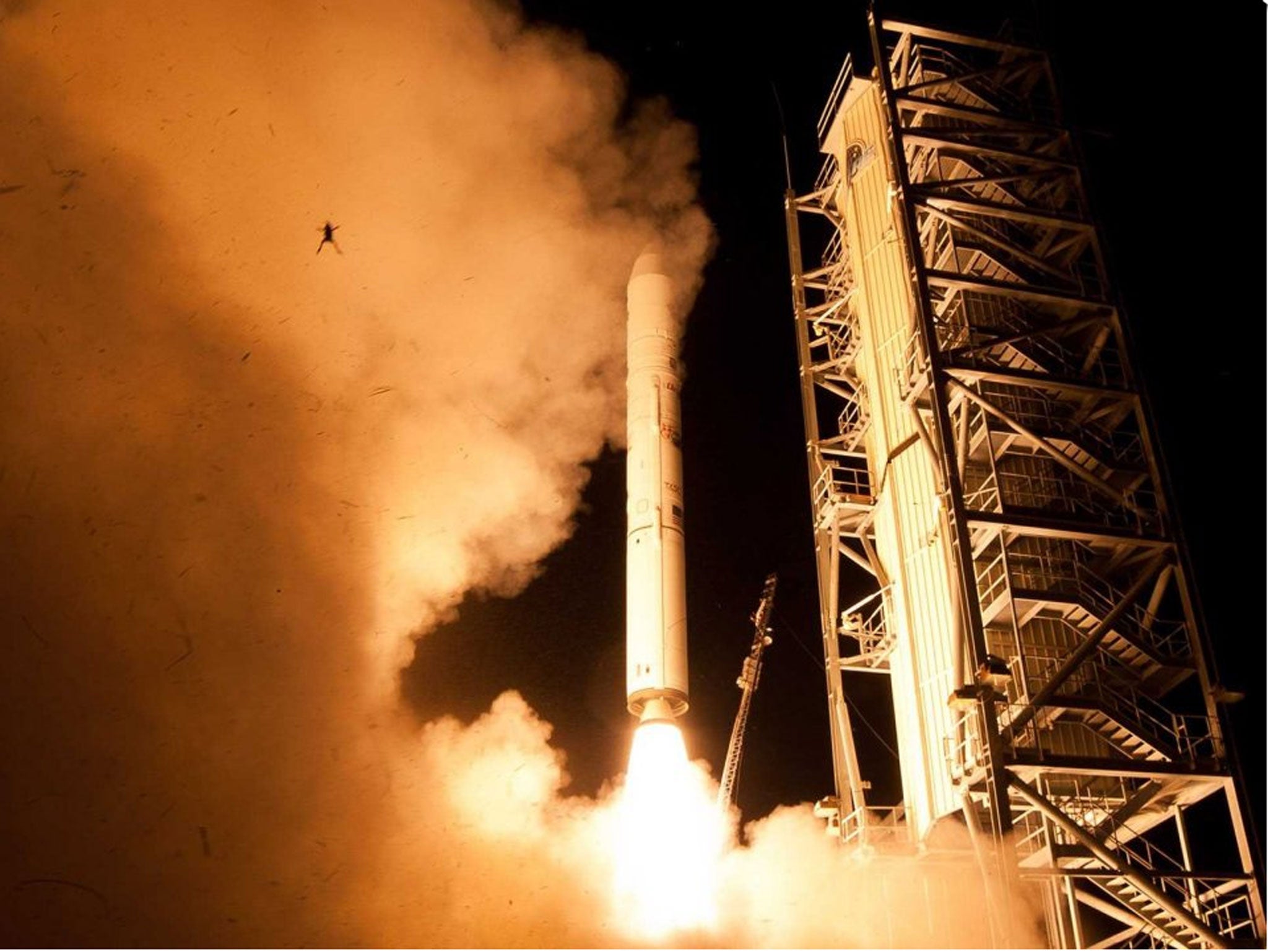Frog photobombs Nasa rocket launch with one giant leap for frogkind

A leaping frog might be a sight more suited to pastoral ponds than rocket launches but from spawn to space, this ambitious amphibian ambushed a Nasa mission earlier this week.
The frog ‘photobombed’ Nasa’s launch of the LADEE spacecraft, a probe sent to explore the moon from Virginia last Friday.
From lily pad to launch pad wasn't too much of a stretch for the frog, with a “pool” at the Wallops/Mid-Atlantic Regional Spaceport serving a high pressure sprinkler system to prevent fires and reduce sound wave forces on the craft.
So at one point the launchpad might have been a nice place for the frog to hang out. Unfortunately after being propelled into the air, the frog probably didn’t make it.
A NASA spokesperson said: “The photo team confirms the frog is real and was captured in a single frame by one of the remote cameras used to photograph the launch. The condition of the frog, however, is uncertain.”
LADEE, stands for Lunar Atmosphere and Dust Environment Explorer and the mission is sending a probe to orbit the moon and send back information about the lunar surface.
The mission cost $280m (£180m) also hopes to get an insight into the odd behaviour of moondust, which appears to levitate from the surface and has mystified scientists and astronauts for decades.
Join our commenting forum
Join thought-provoking conversations, follow other Independent readers and see their replies
0Comments